They may sit behind marble desks, wearing expensive suits, with their ties done up to 11 o’ clock – but that doesn’t mean they won’t… steal your cash! Here’s our rundown of the most mind-boggling financial crimes in history.
10. Martin Frankel
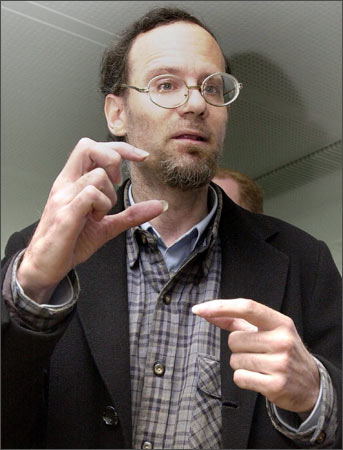
Image via rediff
Loot:
$200 million +
What He Did:
In 2004 Martin Frankel was convicted of looting several insurance companies throughout the Midwest of over $200 million (some say anywhere up to $1 billion). Frankel had acquired the companies through a private trust set up to hide his involvement since he had been barred from trading following the detection of a similar scheme carried out years earlier in Ohio. Claiming he was investing the companies’ assets, he instead stole $200 million to pay for a two-house compound in Connecticut and luxury cars to lure women, some of whom he met through ads for sex.
How He was Caught:
As his deception deepened he began scrambling for respectability, attempting to align his companies with the Vatican by offering $50 million to found a St. Francis of Assisi Foundation for the Church. It wasn’t long before his luck ran out though – in 1999, citing irregularities, the State of Mississippi began supervising three of his insurance companies. In an attempt to get away, Frankel converted much of his money – literally millions of dollars – into diamonds, acquired fake papers and bought a private jet before flying to Germany (taking two of his mistresses with him). Arrested in Hamburg, he was accused of using a false passport and smuggling diamonds before being sentenced to three years in jail for these crimes – nothing compared to what he got following his extradition to America in 2004…
Sentence:
16 years in jail.
9. Bayou Hedge Fund
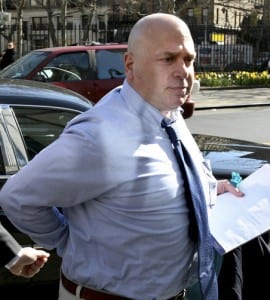
Image via hedgeco
Loot:
$300 million
What They Did:
Samuel Israel III and Daniel Marino set up the Bayou group in 1996, taking $300 million in investments and promising a total return of $7.1 billion. Investors were, however, defrauded from the start as the funds were misappropriated for personal use by Israel and Marino. After poor returns in 1998 the pair were forced to lie about the fund’s returns and in order to do so more convincingly, they set up a fake accounting firm, Richmond-Fairfield, to provide misleading audited results. Israel and Marino disguised trading losses from Bayou’s early investors by lying about the fund’s performance and padding the results with infusions of cash from Bayou Securities, a stock-trading subsidiary that racked up heavy commissions from Israel’s frenetic trading.
How They Were Caught:
The scheme collapsed when Seattle-based Silver Creek Capital Management sought to withdraw $53 million in August 2005. According to Marino’s lawyer, Andrew Bowman, Israel told Marino to write a check although Bayou lacked the funds. Marino wrote the check and then penned a six-page confession and suicide note, which was subsequently discovered by an investor, leading investigators to the fraud. Israel’s car was found abandoned on the Bear Mountain Bridge, NY state, on June 10, 2008 with the words ‘Suicide is Painless’ the title of the theme song from the hit TV series, M*A*S*H, written on the hood. Police suspected that this was an attempt by Israel to fake his own death in order to avoid prison. And this was confirmed when he subsequently surrendered himself to police on July 2nd.
Sentence:
Israel – 22 years in jail.
Marino – 20 years in jail.
8. John Rusnak
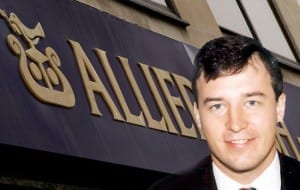
Image via advanced trading
Loot:
$691 million
What He Did:
In 1993, Allfirst Bank hired currency trader, John Rusnak, to shift the bank’s forex operations from merely a hedging endeavor to one that would yield profits. Rusnak believed the yen had taken all the damage it could following the bursting of the Japanese bubble and that it would appreciate consistently against the dollar, and was so bullish about this belief that he neglected to hedge his forward contracts. His luck held until a series of policy changes in Asia prompted a long slide in the value of the yen and other Asian currencies. With his unhedged positions facing losses, Rusnak entered false options into the system that made it look like his positions were hedged. While the options kept the bank from discovering the losses, he set about doubling his bets on the rise of the yen. Panicking, Rusnak increased the size of his trades and kept his losses hidden by using options and a higher level forex contract, allowing him to hold off realizing his losses, while still betting more on the yen. His final position was revealed to be a staggering loss of $691 million.
How He Was Caught:
Even though Rusnak’s losses were barely detectable, the spiralling amount of capital that was being sucked into the deception was becoming increasingly obvious and inconvenient for the bank. When Allfirst demanded Rusnak release capital in order to ease its balance sheet of the heavy skew towards the forex market, his scheme was gradually uncovered. Rusnak himself had not taken anything over or above his salary, and he later cooperated fully with the FBI to reveal how he had been able to maneuver around the bank’s loose trading restrictions.
Sentence:
7 and 1/2 years in jail + $1 million fine.
7. Enron

Image via wikimedia
Loot:
$1 billion +
What They Did:
In just 15 years, Enron grew from nowhere to be America’s 7th largest company, employing 21,000 staff in more than 40 countries. But the firm’s success turned out to have involved an elaborate scam. Through the use of accounting loopholes, special purpose entities and poor financial reporting, senior executives were able to hide billions in debt from failed deals and projects. Among the firm’s crimes were: manipulating the Texas power market, bribing foreign governments to win contracts abroad and manipulating the California energy market.
How They Were Caught:
In 2001 Bethany McLean’s article Is Enron Overpriced? questioned how Enron could maintain its high stock value, which was trading at 55 times its earnings. – she pointed out how analysts and investors did not know exactly how Enron was earning its income. McLean was first drawn to the company’s situation after an analyst suggested she view the company’s 10-K report, where she found ‘strange transactions’, ‘erratic cash flow’, and ‘huge debt’. In July 2001, Enron reported revenues of $50.1 billion, beating analysts’ estimates by 3 cents a share. However, concerns were mounting. In October Enron reported a $638 million third-quarter loss and disclosed a $1.2 billion reduction in the value of shareholders’ stakes, prompting the Securities and Exchange Commission to begin an inquiry into the firm’s accounts. Later that month Enron announced that the SEC inquiry had been upgraded to a formal investigation, and in November was forced to revise its financial statements for the previous five years to account for $586 million in losses. Following this Enron’s accountancy firm, Arthur Andersen, received a federal subpoena and was eventually found guilty of fiddling Enron’s accounts. As the depth of the deception unfolded, investors and creditors retreated, forcing the firm into Chapter 11 bankruptcy.
Sentences:
Rick Causey (Chief Accounting Officer) – 7 and 1/2 years in jail.
Andrew Fastow (Chief Financial Officer) – 6 years in jail.
Jeffrey Skilling (Former Enron CEO) – 24 years in jail.
Kenneth Lay (Former Enron CEO) – died before sentencing.
6. Toshihide Iguchi
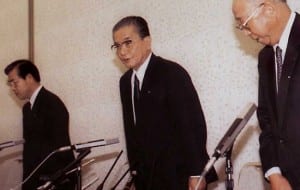
Image via businessweek
Loot:
$1.1 billion
What He Did:
Early on in Iguchi’s career he lost a few hundred thousand dollars and was tempted into selling off bonds to pay his losses. Following this he concealed his unauthorized sales from the custody account by falsifying Banker’s Trust account statements to indicate that securities had not been sold. Iguchi is said to have forged more than 30,000 trading slips, among other documents during the fraud. When customers sold off securities Iguchi had, in fact, already sold off on his own behalf, or when customers needed to be paid interest on long-gone securities, Iguchi settled their accounts by selling off yet more securities and changing yet more records. Eventually about $377 million of Daiwa customers securities and about $733 million of Daiwa’s own investment securities had been sold off by Iguchi to cover his own trading losses.
How He Was Caught:
In September of 1995, fearing the damage his losses may cause the bank if inadvertently discovered, Iguchi wrote a confession letter to the president of the bank in Japan, detailing what had transpired. By this time the loss was in excess of $1 billion. Iguchi himself claimed that he concealed this loss to protect his reputation and job, and this desire to maintain face provided the impetus for further unauthorized trading. Daiwa instructed Iguchi to continue concealing the losses, but turned the confession letter over to the federal authorities and Iguchi was arrested at his home. Iguchi later argued in his defense, correctly, that not a single customer of the bank had lost any money.
Sentence:
4 years in jail.
5. Nick Leeson
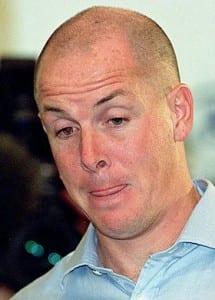
Image via wikimedia
Loot:
$1.4 billion
What He Did:
From 1992, Leeson made unauthorized speculative trades that at first made large profits for Barings from his office in Singapore, earning a bonus of $200,000 on top of his salary of $90,000 that year. However, his luck soon ran out when he used one of Barings’ error accounts (accounts used to correct mistakes made in trading) to hide his losses. Leeson continued to use this account to cover further bad trades, subsequently insisting that he never used the account for his own gain. The beginning of the end occurred on 16 January 1995, when Leeson placed a short straddle on the Singapore and Tokyo stock exchanges, essentially betting that the Japanese stock market would not move significantly overnight. However, the Kobe earthquake hit early in the morning on 17 January, sending Asian markets, and Leeson’s trading positions, into a downfall. Leeson attempted to recoup his losses by making a series of increasingly risky new trades, but these only worsened his position. Eventually, Leeson left a note reading “I’m Sorry” and fled Singapore on 23 February, leaving losses of 1.4 billion, or twice the bank’s available trading capital. After a failed bailout attempt, Barings was declared insolvent on 26 February.
How He Was Caught:
It was fairly obvious something was up when the twice the bank’s trading capital was lost and Barings went bankrupt.
Sentence:
6 and 1/2 years in jail.
4. WorldCom
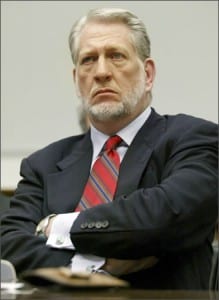
Image via rediff
Loot:
$3.8 billion
What They Did:
WorldCom CEO, Bernard Ebbers, became wealthy from the rising price of his holdings in the telecommunication company’s stock, however, in 2000 the industry entered a downturn and WorldCom’s aggressive growth strategy suffered a serious setback when it was forced to abandon a proposed merger with Sprint by the US Justice Department. By that time WorldCom’s stock was declining and Ebbers came under increasing pressure from banks to cover the margins on stock he had used to finance his other businesses (timber and yachting, among others). Beginning modestly in 1999, and continuing at an accelerated pace through to 2002, senior executives used fraudulent accounting methods to mask WorldCom’s declining earnings by painting a false picture of financial growth, and therefore keeping the price of its stock artificially high.
How They Were Caught:
In 2002 a small team of internal auditors uncovered the $3.8 billion fraud, and shortly thereafter several WorldCom executives were fired and the SEC launched a formal investigation. It eventually emerged that many billions of losses had been concealed using false accounting practices, and some of the money had been siphoned off for personal use. On July 21, 2002, WorldCom filed for bankruptcy in the largest such filing in US history at the time (since overtaken by the collapse of Lehman Brothers and Washington Mutual in 2008).
Sentence:
Bernard Ebbers – 25 years in jail.
3. Jérôme Kerviel
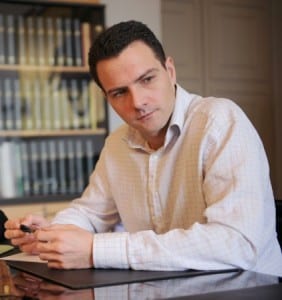
Image via souklaye
Loot:
$4.9 billion
What He Did:
Throughout 2007 Jérôme Kerviel, a junior futures trader at French bank Société Générale, appeared to be trading profitably in anticipation of falling market prices. However, Kerviel was in fact exceeding his authority by engaging in unauthorized trades totaling tens of billions of dollars, and much more than the bank’s total market capitalization. Kerviel attempted to conceal the activity by creating losing trades intentionally so as to offset his early gains, and by the beginning of 2008 he had generated over $1 billion in hidden profits. Whenever fake trades were questioned, Kerviel would describe it as a mistake then cancel the trade, after which he would replace that trade with another transaction using a different instrument to avoid detection.
How He Was Caught:
Among the tricks Kerviel used to hide his activities was to send fake e-mails justifying missing trades, as well as stealing his colleagues’ log-in details in order to conduct trades in their names. He was eventually uncovered when the bank could find no trace of him receiving the purported messages in their e-mail archival system, Zantaz. Following the discovery, Société Générale closed out Kerviel’s trading positions over three days of trading beginning January 21, 2008, a period in which the market experienced a large drop in equity indices, leaving the bank with estimated losses of around $5 billion.
Sentence:
Kerviel has been released for the time being and banned from trading, but it was recently announced that he will stand trial for the incident and faces up to 5 years in jail and a hefty fine.
2. Allen Stanford
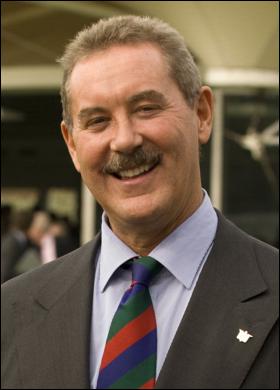
Image via rediff
Loot:
$8 billion
What He Did:
In 2006 Stanford became the first American to be knighted by a Commonwealth nation, but only a few years later it emerged that his firm, Stanford International Bank, sold $8 billion worth of so-called ‘certificates of deposit’ to investors, promising improbable and unsubstantiated high returns that never materialized. Furthermore, buyers of these CDs were told their deposits were safe. More than $1 billion of the investments were diverted into personal loans for Stanford, who falsely claimed that SIB’s assets grew from $1.2bn in 2001, to approximately $8.5bn by the end of 2008. According to the charges recently filed against him, approximately $5 billion of SIB’s assets consisted of note on loans to Stanford and grossly overstated interests in what he called his ‘island properties’ (which consisted mainly of $2 billion from an artificial real estate deal in Antigua).
How He Was Caught:
Stanford was caught out when an amateur investor planning to invest in SIB hired Alex Dalmady, a Venezuelan financial analyst, for a second opinion on Stanford’s accounts. Within hours he spotted what he believed was a gaping $50 billion hole in SIB and advised his friend to withdraw his investments. Not content though, Dalmady wrote an article about Stanford’s irregularities which was published by a Venezuelan website called Venepiramides in Spanish, before bring circulated around the world in English on a blog called The Devil’s Excrement. BusinessWeek was the first major American publication to pick up the story, on February 11, and within a week charges had been laid in court against Stanford accusing him of orchestrating a massive, ongoing ponzi scheme, and his business was placed in receivership.
Sentence:
Stanford is currently being held in the Joe Corley Detention Center, Texas, where he was recently hospitalised by another inmate. He faces up to 20 years in jail and a hefty fine.
1. Bernard Madoff
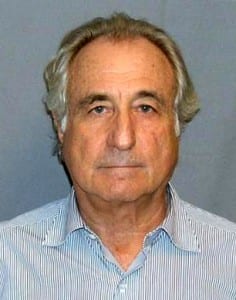
Image courtesy of United States Department of Justice, via wikimedia
Loot:
$65 billion
What He Did:
Madoff created what is probably the biggest corporate con in history – essentially a massive ponzi scheme – by encouraging investment from wealthy individuals and companies around the world, and then using further investment rather than profit to payoff existing investors, keeping the difference himself. Initially, he tapped local money pulled in from country clubs and charity dinners on the so-called ‘Jewish circuit’ of wealthy New York Jewish businessman. The former chairman of the NASDAQ stock exchange was held in such high regard, investors actively sought him out to casually plead with him to manage their savings so they could start reaping the steady, solid returns their envied friends were getting. Madoff and his promoters then blazed a trail through Europe, the Middle East and Asia, securing investments as they went.
How He Was Caught:
Although doubts were raised about his scheme as early as 1999, had it not been for the credit crunch, Madoff may well have gone detected much longer. The recession dried up his sources of liquidity and when investors, rattled by the financial crisis and reaching for cash, sought to pull out some $7 billion from the fund, he was forced into giving himself away. As one commentator warned at the time: ‘don’t be surprised if other scams get flushed out in the coming weeks and months as the crisis deepens’. In the end prosecutors estimated the size of the fraud to be $64.8 billion, based on the amounts available in the accounts of Madoff’s 4,800 clients as of November 30, 2008 – the biggest corporate swindle ever.
Sentence:
150 years in jail + ordered to pay restitution of $170 million.